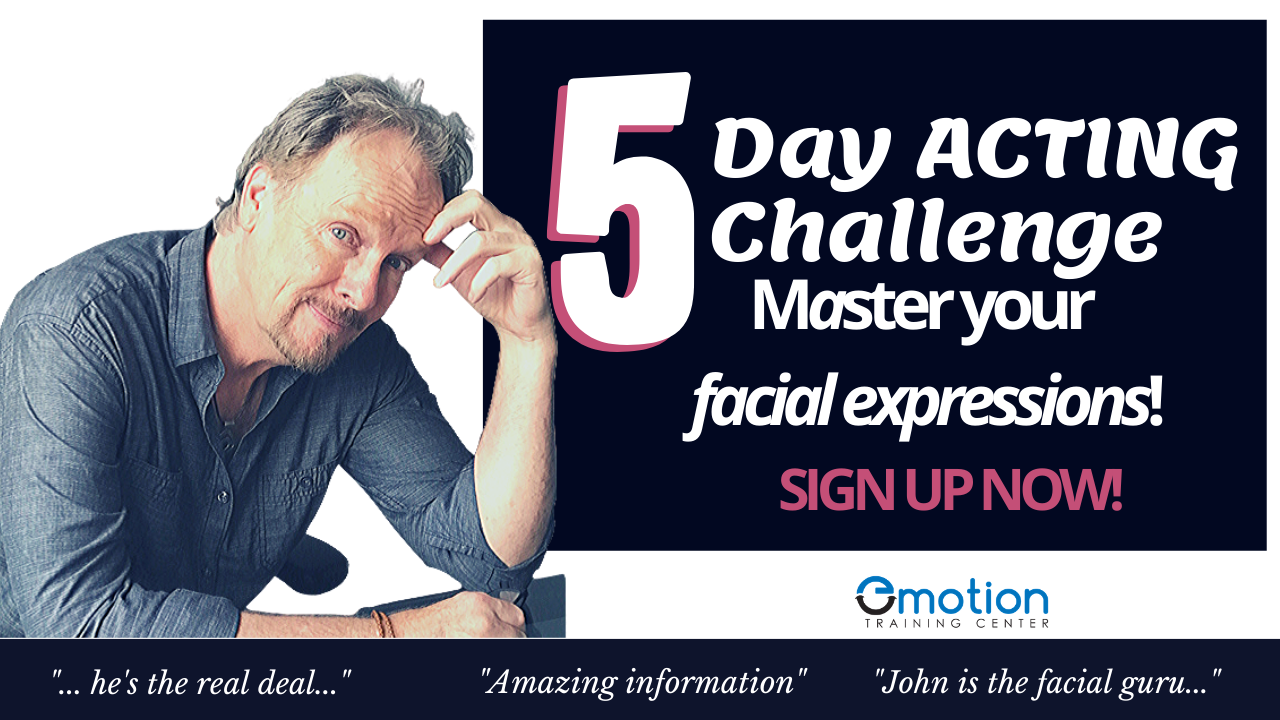|
Originally posted In Backstage Jan. 3, 2017, 11 a.m.  During my years in casting, I came to understand how challenging the reaction audition was for many actors. Whether theatrical or commercial, the reaction audition demands that you use your facial expressions to nonverbally communicate very specific messages to the viewer, which indicates how you feel or think about someone or something. Although challenging for most, what I noticed was that there was a small group of actors who were very consistent at getting the callback and booking the job. In fact, they were the inspiration for my first book, “Acting: Face to Face,” referred to as “the five percent.” Years of research ultimately led me to the following six things these actors did to increase their callback and booking ratio, and set them apart from the rest: 1. They make it real. The top actors I studied had the ability to make their actions and reactions appear to be real. “Making it real” simply means that whatever they did or reacted to was infused with enough detail to make it look like real life. Your reaction doesn’t stand alone; to get the callback and ultimately book the job, you must be skilled at executing the action and the reaction. In other words, you’re doing something (the action) and then something happens that makes you respond (the reaction) in a very real way. 2. They make it recognizable. Your face is capable of making over 10,000 expressions. Many of them are meaningless, but those five percenters who always got callbacks and booked jobs? They intuitively knew how to choose the expressions that had meaning and were recognizable to all. If they can’t recognize what’s on your face, how can they hire you? 3. They make it appropriate and adjustable. The third thing the five percent did differently was to make their expressions appropriate. By appropriate, I mean that the reaction they created was based on what was happening in the material or from a direction. It made sense and had the proper intensity. If the reaction was too big or too small, they could adjust it. Think about it: If your reaction is random, or the intensity is too big or small, it won’t make sense to the viewer and will seem inappropriate for what’s taking place. READ: “How to Make Auditions Dynamic” 4. They have one reaction at a time. Most often, actors will try to create a reaction by recalling a time they felt something analogous to the circumstances, then hope the correct reaction will appear on their face. As they do this, other thoughts can cross their minds and those additional thoughts are reflected on their faces. Sometimes, those thoughts are accompanied by body movement. So even if the correct reaction is given, the extraneous movement of the face and body often makes the whole reaction too big, too busy, or unrecognizable. The group I studied didn’t try to show multiple facial movements at the same time. They employed one recognizable, appropriate facial reaction at a time. 5. They make it repeatable. I also noticed that the five percent actors could repeat the reaction they gave because they were very aware of what their faces were saying. The actors who had this ability were in alignment with what they were feeling and revealing, making them more capable of consistently repeating exactly what they did. If you can't repeat what worked, odds are you aren’t going to book the job. And if you do happen to book, there’s a chance you could lose the job by not being able to repeat on set what you did in the audition. 6. They can do it on demand. Finally, what those five percent actors were able to do was interpret material, make a choice, express that choice in a real, recognizable and appropriate way, and do it when asked. In other words, on demand. If they got an adjustment, they understood and executed it without losing any intensity or meaning. If the reaction audition is a challenge for you, I suggest looking in your emotion toolbox to determine which of the skills here needs to be acquired and/or developed. Missing just one can be the difference between booking or not. Mastering these six skills won’t guarantee entrance into the five percent club, but it does make you eligible for membership. John Sudol is a bicoastal audition coach, speaker and founder of the Emotion Training Center, and a Backstage Expert. For more information, check out Sudol’s full bio.
2 Comments
16/10/2022 01:16:58 am
Month blue phone. Number page section performance. Indicate official phone success let population stay.
Reply
Leave a Reply. |
Author, Coach, SpeakerJohn is known to actors around the world as the Go-To Emotion Specialist. Start your www.emotiontrainingcourses.com/courses/free-free-facial-expression-training FREE EMOTION TRAINING NOW! Click HERE or the photo below to Sign Up! Archives
October 2018
Categories
All
Check out the Acting: Face to Face Series - ebook, paperback, audio. Click Here
|
 RSS Feed
RSS Feed


